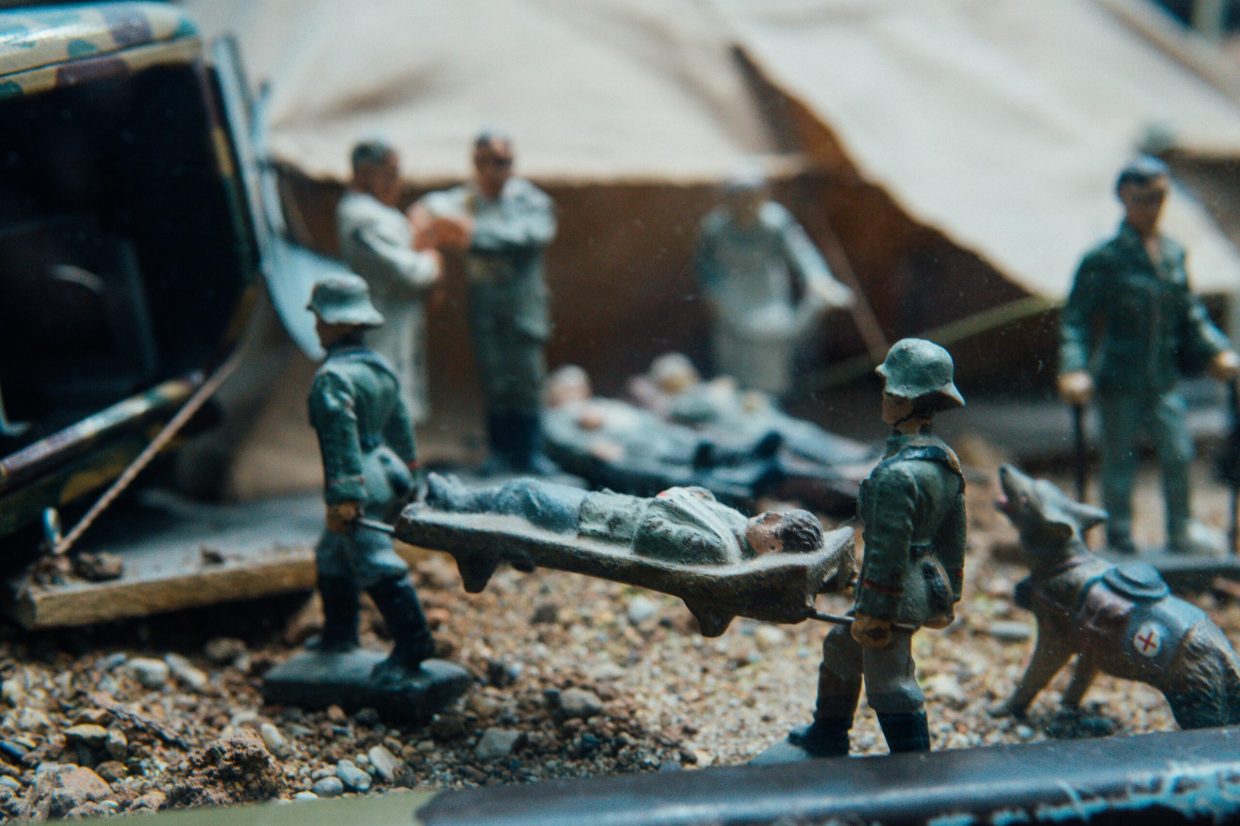Living in a war zone isn’t just about facing the dangers of conflict; it’s also about navigating the heavy emotional and psychological toll that comes with it. For civilians, trauma isn’t always visible—there are no obvious bruises, but the impact runs deep. Understanding the signs and symptoms of trauma can be a crucial step in supporting those affected and fostering resilience in the midst of chaos. In this article, we’ll explore what trauma looks like for people living in war-torn areas, why it matters, and how compassion and awareness can make a real difference. Let’s dive in.
Table of Contents
- Recognizing the Hidden Signs of Trauma Beyond the Battlefield
- How War Zone Stress Impacts Everyday Life and Relationships
- Practical Ways to Support Loved Ones Experiencing Trauma
- Building Resilience Together Creating Safe Spaces for Healing
- To Conclude
Recognizing the Hidden Signs of Trauma Beyond the Battlefield
Trauma experienced by civilians in war zones often manifests in subtle, less visible ways that can easily be mistaken for everyday stress or fatigue. Beyond the obvious physical dangers, the psychological aftermath includes symptoms like frequent nightmares, persistent feelings of helplessness, and difficulty concentrating. These signs may not always prompt immediate attention, yet they profoundly affect a person’s ability to function and connect with others. Recognizing these patterns early plays a crucial role in providing timely support and fostering resilience in affected communities.
Some of the hidden symptoms to watch for include:
- Sudden withdrawal from friends and family
- Increased irritability or unexplained anger
- Uncharacteristic risk-taking behaviors
- Physical complaints without medical explanation, like headaches or stomach aches
- Heightened anxiety or hypervigilance, particularly in safe settings
Being mindful of these less obvious signs helps break the stigma around trauma and encourages a compassionate response that goes beyond traditional battlefield mental health narratives.
How War Zone Stress Impacts Everyday Life and Relationships
Living amidst conflict and uncertainty shapes every moment for civilians, creating a persistent undercurrent of anxiety that infiltrates daily routines. The constant threat of danger doesn’t just evoke fear; it alters how people perceive safety, trust, and connection with others. Simple tasks such as going to the market, attending school, or even engaging with neighbors become laden with stress, as the mind remains on high alert. This heightened state of tension often results in difficulty concentrating, sleep disturbances, and emotional exhaustion, which collectively hinder a person’s ability to engage fully in everyday life.
Relationships, which are fundamental to emotional resilience, bear a significant brunt of this continuous strain. Communication patterns may shift dramatically, with loved ones experiencing irritability, withdrawal, or mistrust. Sometimes, trauma manifests as physical symptoms like headaches or an overwhelming feeling of numbness, making emotional expression challenging. In families and communities, this translates into:
- Increased conflicts and misunderstandings fueled by unspoken fears and unresolved tensions.
- Diminished social support as individuals isolate themselves to cope with their stress privately.
- Challenges in parenting as caregivers grapple with their own trauma while trying to provide stability.
Recognizing these patterns as normal reactions to abnormal circumstances is essential for fostering compassion and seeking pathways toward healing — even in the most difficult environments.
Practical Ways to Support Loved Ones Experiencing Trauma
Supporting someone who has gone through trauma can feel overwhelming, but small, thoughtful actions can make a significant difference. First and foremost, practice active listening—allow your loved one to share their feelings without interrupting or rushing them. Creating a safe, judgment-free space helps them feel seen and validated. Encourage them to express themselves through whatever means feels right: talking, writing, or even creative outlets like drawing or music. Remember, patience is key; trauma recovery doesn’t follow a strict timeline, and your consistent presence speaks volumes.
In addition to emotional support, practical help can ease their daily burdens. Offer assistance with everyday tasks such as cooking, running errands, or childcare, which can become overwhelming in times of stress. Help them access professional resources by researching trauma-informed therapists or community support groups, and if they’re comfortable, accompany them to appointments. Above all, maintain open communication by checking in regularly—simple gestures like a message or a warm cup of tea can reinforce your unwavering support during their healing journey.
Building Resilience Together Creating Safe Spaces for Healing
In the aftermath of conflict, emotional wounds often run deep, yet they are invisible to the eye. It’s crucial to recognize that healing does not occur in isolation; it thrives within communities that nurture trust and compassion. By fostering environments where individuals feel heard and understood, we can collectively rebuild the strength that war attempts to dismantle. Simple acts such as offering a patient ear or creating consistent routines can empower those affected to find grounding amidst chaos.
Creating safe spaces means more than just physical safety—it requires a commitment to emotional safety. Consider incorporating these approaches to help nurture resilience:
- Active Listening: Encouraging open dialogue without judgment helps individuals express fears and doubts freely.
- Community Support: Building peer networks where shared experiences become a source of strength and understanding.
- Empathy and Patience: Allowing healing to unfold at its own pace, respecting each person’s unique journey.
- Consistent Routines: Reintroducing predictability to restore a sense of control and safety.
By uniting in care and understanding, we pave the way for recovery that’s not just personal but deeply communal—transforming trauma into a foundation of hope and resilience.
To Conclude
Living in a war zone is an experience that leaves deep marks, often invisible but very real. By understanding the trauma symptoms civilians may face, we take an important step toward offering the compassion and support they deserve. If you or someone you know is affected, remember that help is available and recovery, though challenging, is possible. Together, by staying informed and empathetic, we can create a world that acknowledges these struggles and fosters healing. Thanks for reading, and let’s keep the conversation going!













